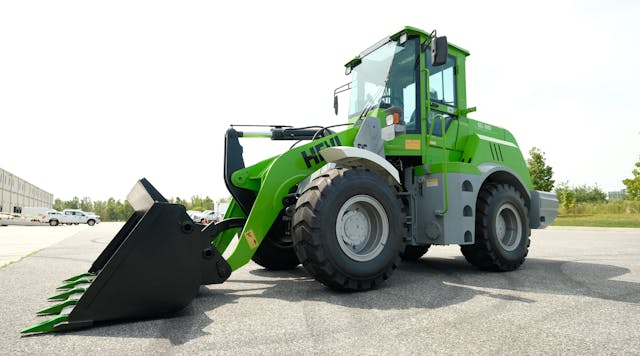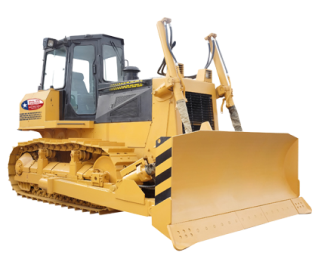The Essential Overview to Leasing Excavators for Building Projects
Leasing excavators for construction tasks is an important decision that demands an extensive understanding of various elements to ensure both performance and cost-effectiveness. From picking the appropriate excavator type and size to discussing rental terms and guaranteeing safety and security procedures, each action plays an essential role in the overall success of your task. Understanding these elements not only optimizes performance however likewise helps in minimizing costs. As you consider the complexities of leasing excavators, it's vital to understand the nuances that can dramatically impact your task. What are these nuances, and how can they affect your building outcomes?
Types of Excavators
Excavators can be found in different types, each made to do certain tasks in building jobs. The most common type is the conventional excavator, additionally referred to as a spider excavator, which is ubiquitous on a lot of work websites for its adaptability in product, digging, and trenching handling. These devices operate tracks, offering security and flexibility over uneven terrain.
An additional vital variant is the mini excavator, treasured for its small size and dexterity. Perfect for small to medium-sized tasks, mini excavators master constrained spaces where larger devices would have a hard time. They are regularly made use of for landscaping, energy work, and small demolition.
For projects requiring extended reach, the long-reach excavator is vital. Outfitted with a longer boom and arm, these devices can operate in locations that are hard to gain access to, such as throughout water bodies or deep excavations.
Lastly, there are specialized excavators like the suction excavator, which utilizes high-powered fans to vacuum up soil and debris, making it perfect for fragile below ground utilities. The dragline excavator, an additional specialized type, is frequently utilized in large civil engineering projects like canal dredging and mining due to its capability to raise heavy loads over fars away.
Selecting the Right Dimension
Picking the ideal dimension of an excavator is critical for the efficiency and success of any building project. The dimension affects not only the device's ability to deal with details tasks yet additionally the functional expenses and website accessibility. Excavators come in different sizes, from small systems suitable for small residential jobs to big machines created for substantial commercial or industrial tasks.
Recognizing the extent of the job is crucial when choosing on the excavator dimension. For constrained areas or tasks calling for accuracy, such as trenching for utility lines, a small or small excavator is excellent. These devices supply dexterity and simplicity of ability to move without compromising on power. On the other hand, large earthmoving procedures, like roadway construction or large structure digs, necessitate the use of big or basic excavators. These designs supply superior reach, higher pail capacity, and exceptional digging pressure.
Think about the site's terrain and accessibility points also. Larger excavators might encounter obstacles in limited or unequal areas, making smaller designs a lot more functional. By extensively reviewing these factors, building and construction managers can guarantee they pick an excavator size that enhances productivity and minimizes job delays.
Rental Agreement Fundamentals

Equally essential is the comprehensive break down of expenses. This includes the day-to-day, once a week, or month-to-month rental prices, and any type of added charges such as fuel, delivery, or cleaning fees. It's suggested to ask concerning possible penalties for late returns or damages to prevent unexpected costs.
The problem of the excavator at the time of rental ought to also be well-documented. Guarantee the contract includes a thorough inspection record that notes any kind of pre-existing damages. This shields you from obligation for problems that existed prior to your rental duration began.
Insurance policy protection is an additional essential aspect. Verify whether the rental firm supplies insurance excavator 350 coverage or if you need to secure your own plan. Recognize the terms for equipment maintenance and repair services. Knowing your obligations for upkeep during the rental period will certainly aid maintain the excavator in optimal functioning problem, decreasing downtime and boosting job effectiveness.
Upkeep and Safety Tips
When handling excavators on a construction website, sticking to appropriate upkeep and security procedures is important for guaranteeing both operational effectiveness and employee security. Lubing moving parts and guaranteeing fluid levels are ideal can avoid costly downtime and prolong the equipment's functional life expectancy.
Precaution are just as crucial. Operators ought to be completely trained and licensed to take care of excavators, recognizing the equipment's controls and restrictions. It's essential to conduct daily inspections, concentrating on security attributes such as alarms, seat belts, and emergency shutoff changes. In addition, maintaining a organized and clean worksite minimizes the threat of accidents. Clear interaction methods, including hand signals and radio communication, must be developed to coordinate procedures and activities successfully.
Carrying out a robust upkeep routine and cultivating a society of safety and security can mitigate threats significantly. Constantly speak with the producer's manual for particular upkeep intervals and security guidelines. By prioritizing these aspects, building tasks can proceed smoothly, reducing disruptions and ensuring a safe working setting for all personnel involved.
Cost-Saving Strategies
Effective cost-saving strategies are essential for taking full advantage of the roi when leasing excavators for building and construction jobs. One crucial approach is to perform a detailed needs evaluation prior to service. Recognizing the certain needs of your project assists in selecting the appropriate type and size of excavator, protecting against unneeded expenditures on large or overly customized devices.
Another essential technique is to discuss rental terms. Several rental business offer adaptable pricing structures, especially for long-term leasings. Developing a great partnership with the rental copyright can additionally result in commitment discounts and much better terms. Furthermore, reserving ahead of time can occasionally secure lower prices compared to last-minute leasings.

Lastly, think about the overall expense of possession, consisting of transport, fuel, and insurance. Bundling these services with the rental contract can usually lead to an extra desirable overall bundle. By implementing these techniques, building projects can achieve substantial price performances while guaranteeing operational efficiency.
Final Thought
In final thought, the critical selection and service of excavators for building tasks demand a detailed understanding of excavator kinds, proper sizing, and the details of rental contracts. Implementing cost-saving methods through precise planning and arrangement can better boost task productivity while managing costs.
From picking the ideal excavator kind and dimension to making certain and working out rental terms safety and security procedures, each step plays a pivotal role in the total success of your task. rental company near Bremen GA. The most typical kind is the common excavator, likewise recognized as a spider excavator, which is common on many job sites for its versatility in trenching, product, and excavating handling. By completely assessing these variables, construction managers can ensure they select an excavator dimension that maximizes performance and minimizes task delays

Understanding your duties for upkeep throughout the rental duration will aid keep the excavator in optimal functioning condition, minimizing downtime and boosting job effectiveness.
In conclusion, the tactical selection and leasing of excavators for building tasks demand a thorough understanding of excavator kinds, appropriate sizing, and the complexities of rental agreements.